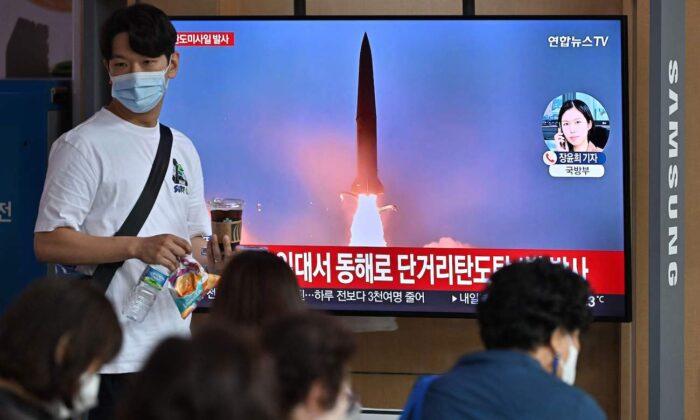South Korea’s military said it was a single, short-range ballistic missile fired from near the Taechon area of North Pyongyan Province just before 7 a.m. local time and flew about 600 km (373 miles) at an altitude of 60 km and a speed of Mach 5.
After the launch, the Joint Chiefs of Staff Chairman Kim Seung-kyum and the U.S. Forces Korea Commander Paul LaCamera discussed the situation and reaffirmed their readiness to respond to any threat or provocation from North Korea, it added.
South Korea’s National Security Council held an emergency meeting to discuss response measures and condemned the launch as an apparent violation of the U.N. Security Council Resolutions and an unjustifiable act of provocation.
South Korean President Yoon Suk-yeol, who arrived in Seoul late on Sept. 24 from a trip to Britain, the United States and Canada, was briefed on the launch, the presidential office said.
Japanese defense minister Yasukazu Hamada said Japan estimated the missile reached maximum altitude at 50 km and may have flown on an irregular trajectory. Hamada said it fell outside Japan’s exclusive economic zone and there were no reports of problems with shipping or air traffic.
Many of the short-range missiles tested by North Korea in recent years have been designed to evade missile defenses by maneuvering during flight and flying on a lower, “depressed” trajectory, experts have said.
“If you include launches of cruise missiles this is the 19th launch, which is an unprecedented pace,” Hamada said.
The U.S. Indo-pacific Command said it was aware of the launch and was consulting closely with allies.
Joint Drills
The launch comes after the arrival of the nuclear-powered American aircraft carrier USS Ronald Reagan in South Korea to participate in joint drills with South Korean forces for four days from Sept. 26 to 29, and ahead of a planned visit to Seoul this week by Harris.It was the first time the North carried out such a launch after firing eight short-range ballistic missiles in one day in early June, which led the United States to call for more sanctions for violating U.N. Security Council resolutions.
After North Korea conducted an unprecedented number of missile tests this year, including its intercontinental ballistic missiles for the first time since 2017, the United States and South Korea said they would boost joint drills and military displays of power to deter Pyongyang.
South Korea’s Yonhap news agency reported on Sept. 24 that North Korea may also be preparing to test a submarine-launched ballistic missile, citing the South’s military.





